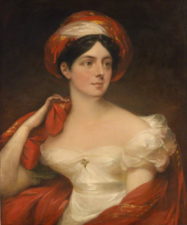“If I had a daughter or a sister, I should teach her adaptability, and that learned I should have no further anxiety for her future,” observed Lily, Duchess of Marlborough, in 1890. “Let her please, not men alone, but people, and the race is hers.”
Lily Warren Price, born into comfortable circumstances in Troy, New York, in 1854, lived by this precept. In a period during which “the narrative of women’s lives remains a marriage plot,” noted American scholar Linda Wagner-Martin, Lily surmounted a conventional upbringing to broaden her horizons through marriage. She chose a trio of disparate but, alas, short-lived husbands, and proved herself unusual as a wife in applying herself to mastering skills at which her husbands excelled and then using them to promote her own interests. In doing so, she not only acquired an extraordinary education, but also flattered the men with whom she shared her life and kept them interested.
Lily’s first husband, wealthy New Yorker Louis C. Hamersley, left his wife the lifetime use of his real estate fortune after three years of marriage, a loving gesture that gave rise to an ugly, protracted, but ultimately futile attempt on the part of his extended family to break his will. From him, Lily learned how to handle money, and her reputation as a clever businesswoman accompanied her throughout her career.
Her second husband, the eighth Duke of Marlborough and the head of the illustrious Churchill family, was a divorcé in an era in which divorce was rare and frowned upon, a known womanizer, and an outcast in aristocratic society. He was also considered by some to be one of the most capable men of his generation. In marrying him, Lily was perhaps the only one of the numerous American women who traded wealth for a European title in the late nineteenth century to do so without the encouragement of an ambitious family and against her parents’ wishes. Her intractable decision to marry the duke and seek new opportunities on the other side of the Atlantic Ocean led to an estrangement from her closest relatives that was never resolved.
Naysayers expected the Marlboroughs to be nothing but unhappy together, but their marriage proved a surprising success. In opposition to all custom, Lily settled no money directly on the duke, but maintained control of her fortune and was her husband’s equal partner when it came to making decisions about how their income should be spent. From him, she acquired knowledge about the intricacies of running a large estate like Blenheim, the Churchill family seat and the grandest home in Britain. She became skilled, too, at overseeing the kind of viable farming operation maintained by her husband. Within weeks of his sudden death, this city-raised woman showed her practical bent by hiring away the Blenheim estate agent and then leasing an important but neglected estate in Dorking, Surrey, that she would run as a stately home to support her aristocratic title, and as a commercial farm on the “scientific” Blenheim model. Her agricultural operation specialized in dairy cows, sheep, pigs, and poultry, and produced some 650 quarts of milk and up to 75 pounds of butter a week for market, as well as 16,000 eggs a year.
Lily had only been a member of the Churchill family for four years when the duke passed away, but she remained close to his relatives after his death. Her intimate friendship with her nephew Winston Churchill offered mutual advantages that both of them knew how to exploit, and her kindness to her stepson after his succession to the ducal title made her many friends and secured for her the social position that had eluded her as Marlborough’s duchess.
Lily’s third marriage, which lasted for more than five years, was her most light-hearted match. Lord William de la Poer Beresford was an ebullient personality with impeccable social credentials and a passion for horseracing. A bachelor recently returned from government service in India when Lily met him through a Churchill sister-in-law, he was an aristocratic favorite of the English man-on-the-street and attracted the kind of public attention that film stars do today. Lily married him shortly after they met, and with him had her first and only child at the age of forty-two. Lord William had no money and no head for it, and while Lily provided him with an annual allowance, it was understood that Lily would make all financial decisions during this marriage and that her residential properties would be run solely according to her wishes. Under Beresford’s infectious guidance, she pursued interests that would never have appealed to her in earlier years. She became a “well-known racing woman,” was rumored to buy racehorses in silent partnership with her husband, and sued unsuccessfully to retain the leased rights to a promising horse after her husband’s unexpected death in 1900. Horseracing was not, however, a lasting hobby, and, once widowed, Lily lost interest in the sport.
Wives of her generation were expected to be submissive in marriage, but Lily was never subservient, was always sure of herself, and proved herself remarkably resilient. Her zeal and aptitude for learning directly, for absorbing indirectly, and for applying her accumulated knowledge and skills creatively were tributes to her intelligence and capability. She deserves respect for the way in which she took charge of her own destiny and orchestrated a life so different from the one expected for her. She propelled herself under her own power a long way from her roots, and proved herself an admirable woman in a fascinating age.
Further Reading
Sally Svenson, Lily, Duchess of Marlborough (1854—1909): A Portrait with Husbands (Dog Ear Publishing, 2011).
Sally E. Svenson is a New York City-based writer whose articles about aspects of nineteenth century social life have appeared in various journals. Her book on nineteenth century vernacular architecture, Adirondack Churches: A History of Design and Building, was published in 2006.


